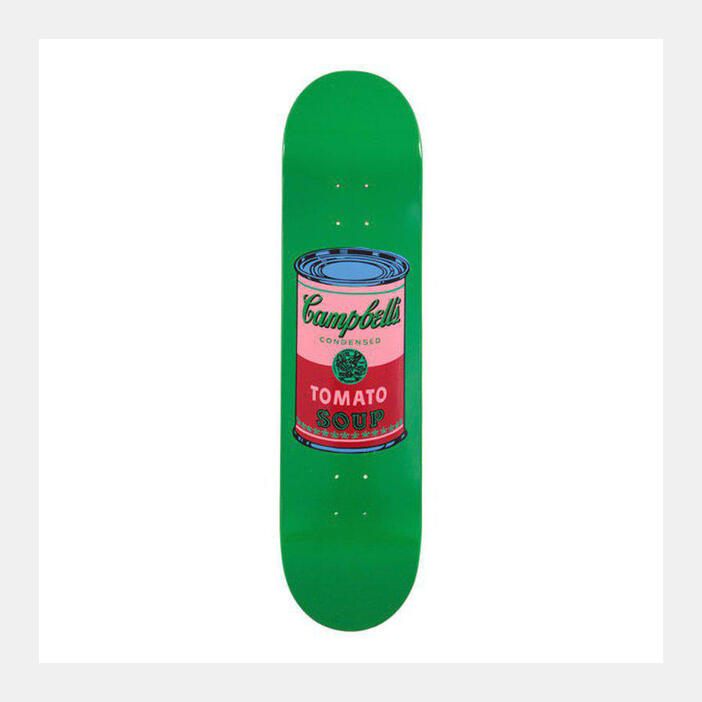

Andy Warhol: Colored Campbells Soup (Blood), 2016
Price AUD$350.00 Price CAD$325.00 Price £225.00 Price T250.00 Price USD$250.00
Wall mounted wooden skateboard printed with Andy Warhol artwork
31.00 x 81.00 in (78.7 x 205.7 cm)
Made of 7 ply Grade A Canadian Maple Wood top, print includes the official Andy Warhol brand logo
Quite possibly the most influential artist since Marcel Duchamp, Andy Warhol revolutionized modern art, radically altering the relationship of art to notions of authorship and commodity, and blurring the boundaries between performance, photography, painting, and sculpture. Warhol’s innovations, which have now become familiar artistic techniques, confounded traditional notions of what an artist did (Warhol outsourced much of his work to assistants) and what artistic subject matter could be. Using reproductions of common, commercially available images from advertising and the celebrity press, Warhol presented art as one commodity among many, an act filled with equal parts indifferent boredom, ingenious marketing, and celebration. He was lauded as a mirror of contemporary American culture, in which, he predicted, everyone would experience (or want to experience), “15 minutes of fame,” to use a phrase he coined.
The fourth son of working-class Slovak immigrants, Warhol (born Andrew Warhola) grew up in Pittsburgh, Pennsylvania. He attended the Carnegie Technical Institute and, in 1949, moved to New York to pursue work as a commercial artist.
Beginning in the 1950s, Warhol began to experiment with presenting mass-produced advertising images as artwork. An early painting depicted a bottle of Coca-Cola, rendered in a painterly, expressionistic manner. A second painting of the same image, made with the strait-laced, hard edge exuberance of graphic art, convinced Warhol that earnest reproductions, with a minimum of artistic intervention, could produce fascinating images. Ivan Karp, a curator for Leo Castelli, agreed with Warhol after seeing his two Coke paintings. Karp introduced Warhol to other like-minded artists, including Roy Lichtenstein and James Rosenquist. He was soon showing his work regularly at galleries in New York and Los Angeles and quickly became an enigmatic doyen of the New York scene. (Some critics and artists, especially the abstract expressionists, took great umbrage with Warhol’s work, seeing it as antithetical to their ideals and as encouraging of consumerism.)
In the 1960s Warhol mostly abandoned hands-on artistic labor, leaving the work to assistants and friends while he acted as a kind of director. He cultivated a fluctuating cadre of “Superstars”—actors, artists, poets, scenesters, and assorted characters at his infamous Factory studio. Their daily lives were documented by the filmmaker Jonas Mekas, the photographer Billy Name, and by Warhol himself in his films, recordings, and photographs. The Factory was a locus for celebrities, eccentrics, and collectors and its activity helped launch the careers of several other artists during its two-decade existence. Despite this, Warhol was publicly shy and retiring, answering many questions with a quiet, monotone “um,” “yeah,” or “no.”